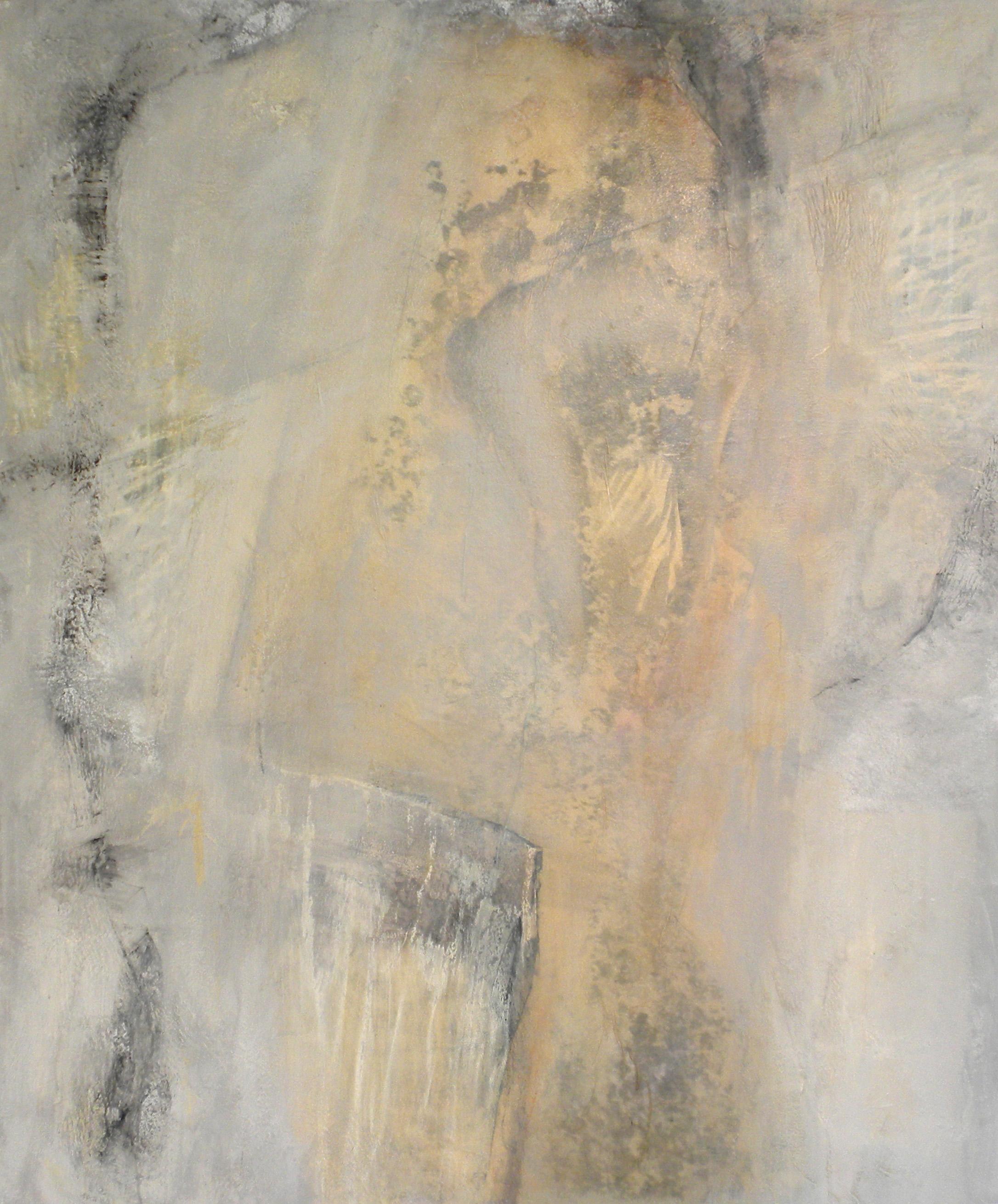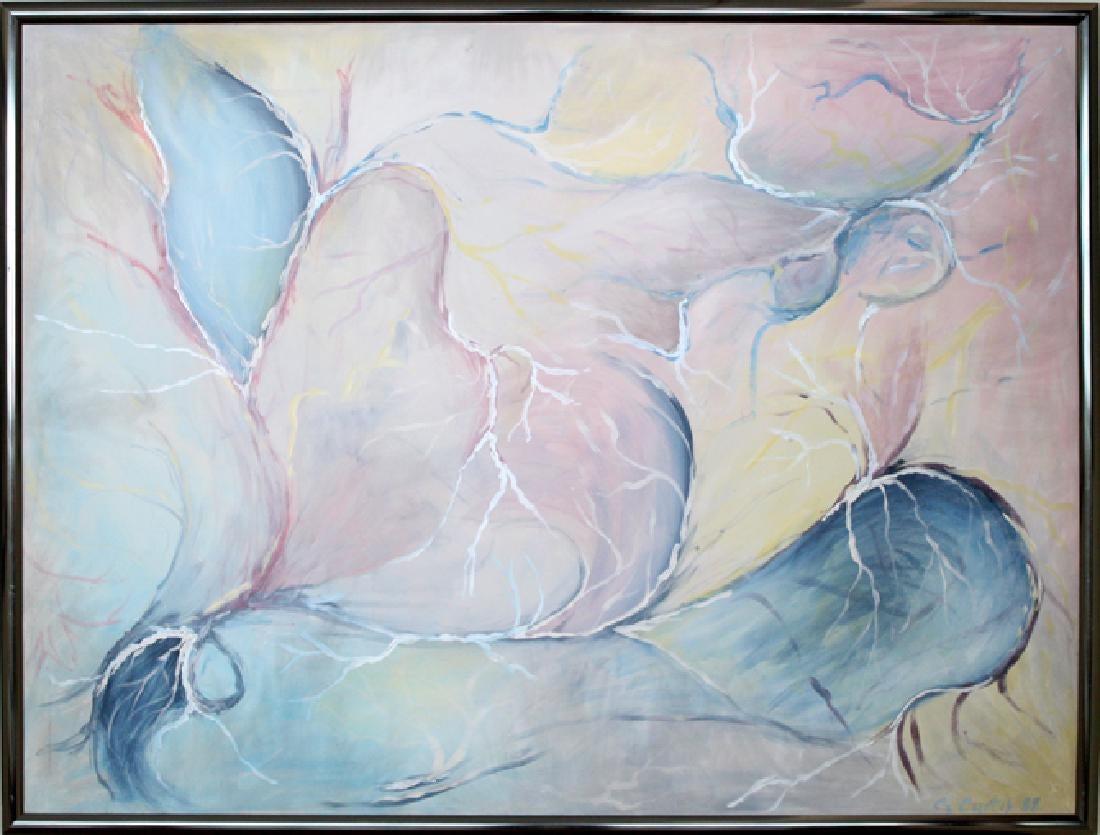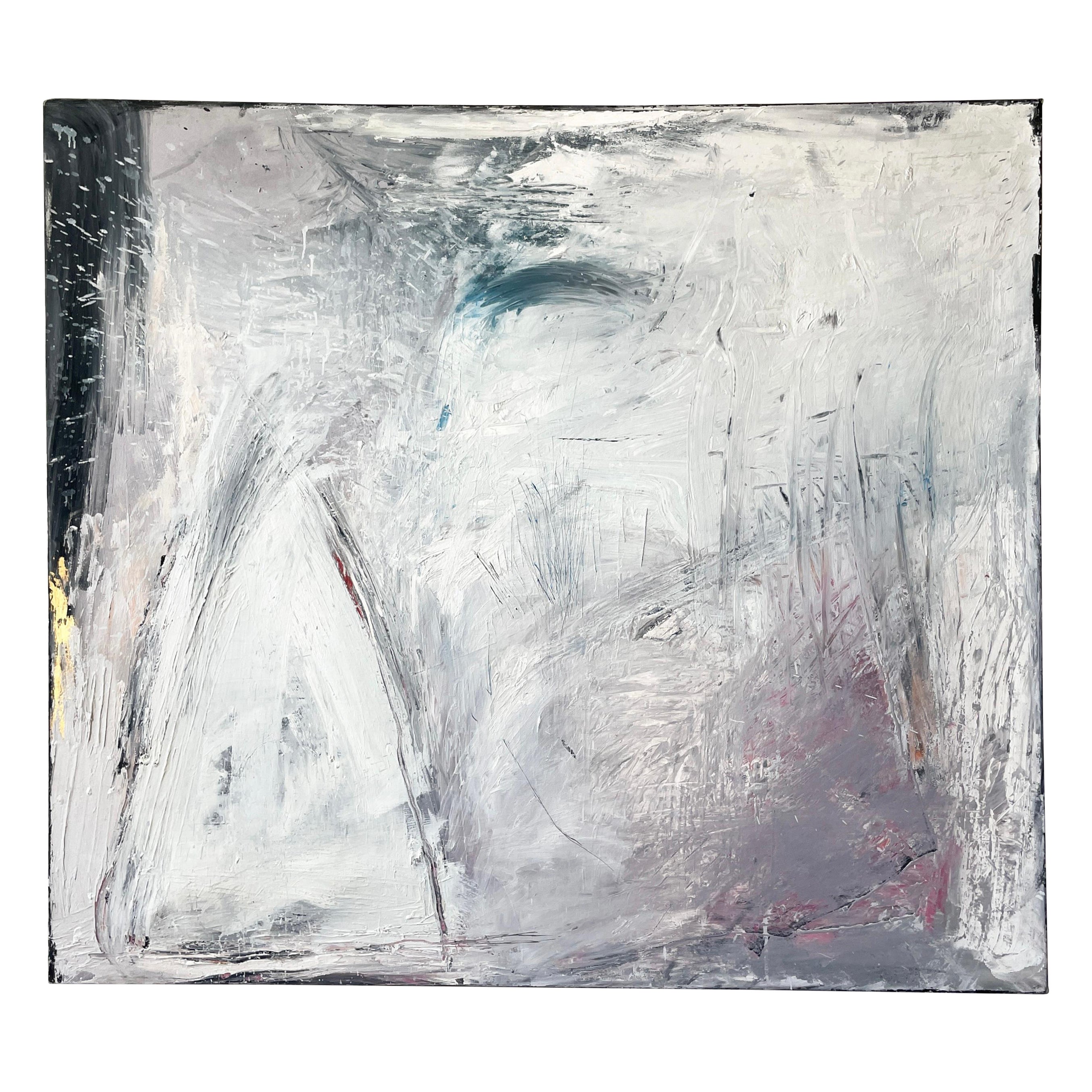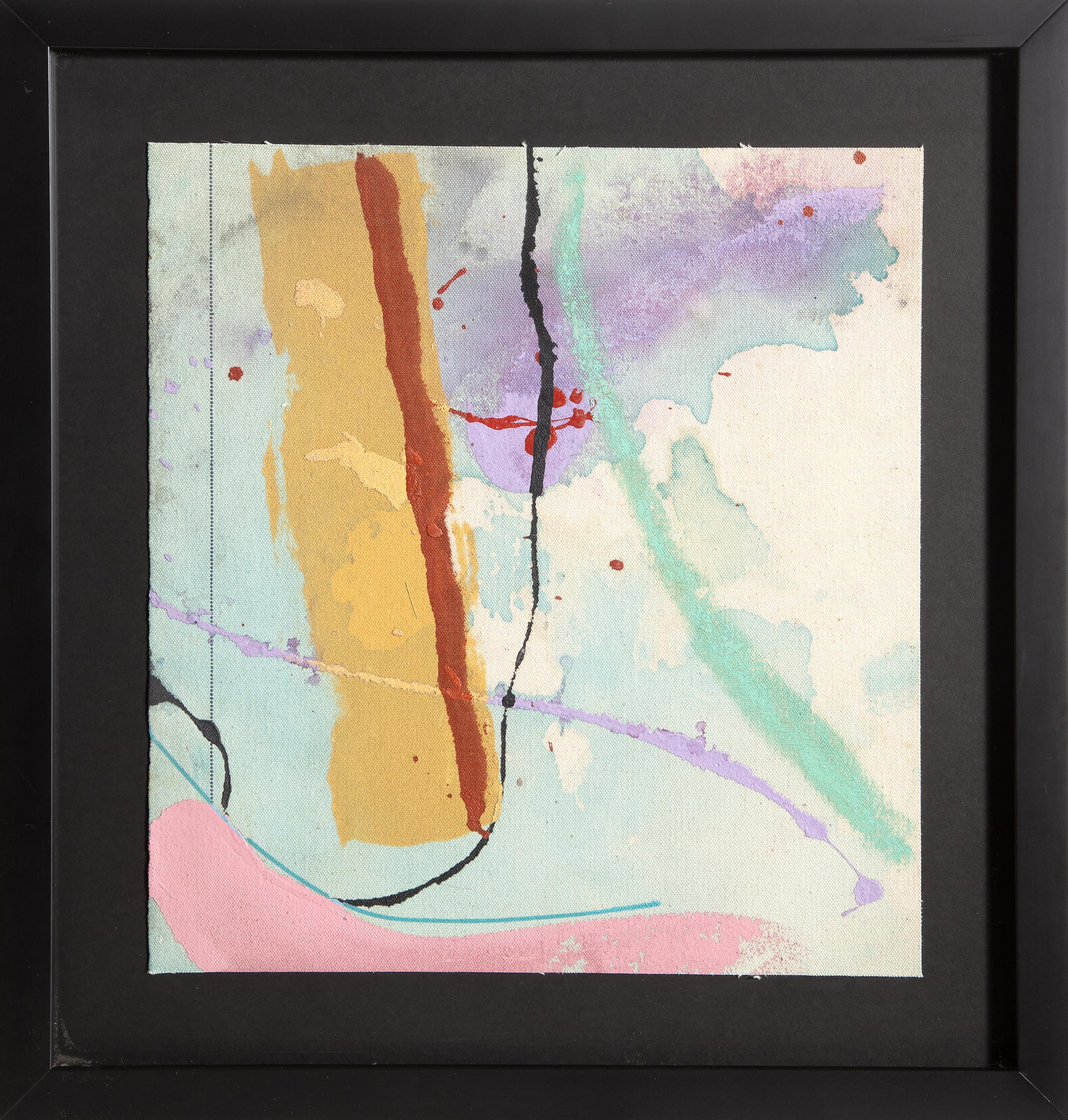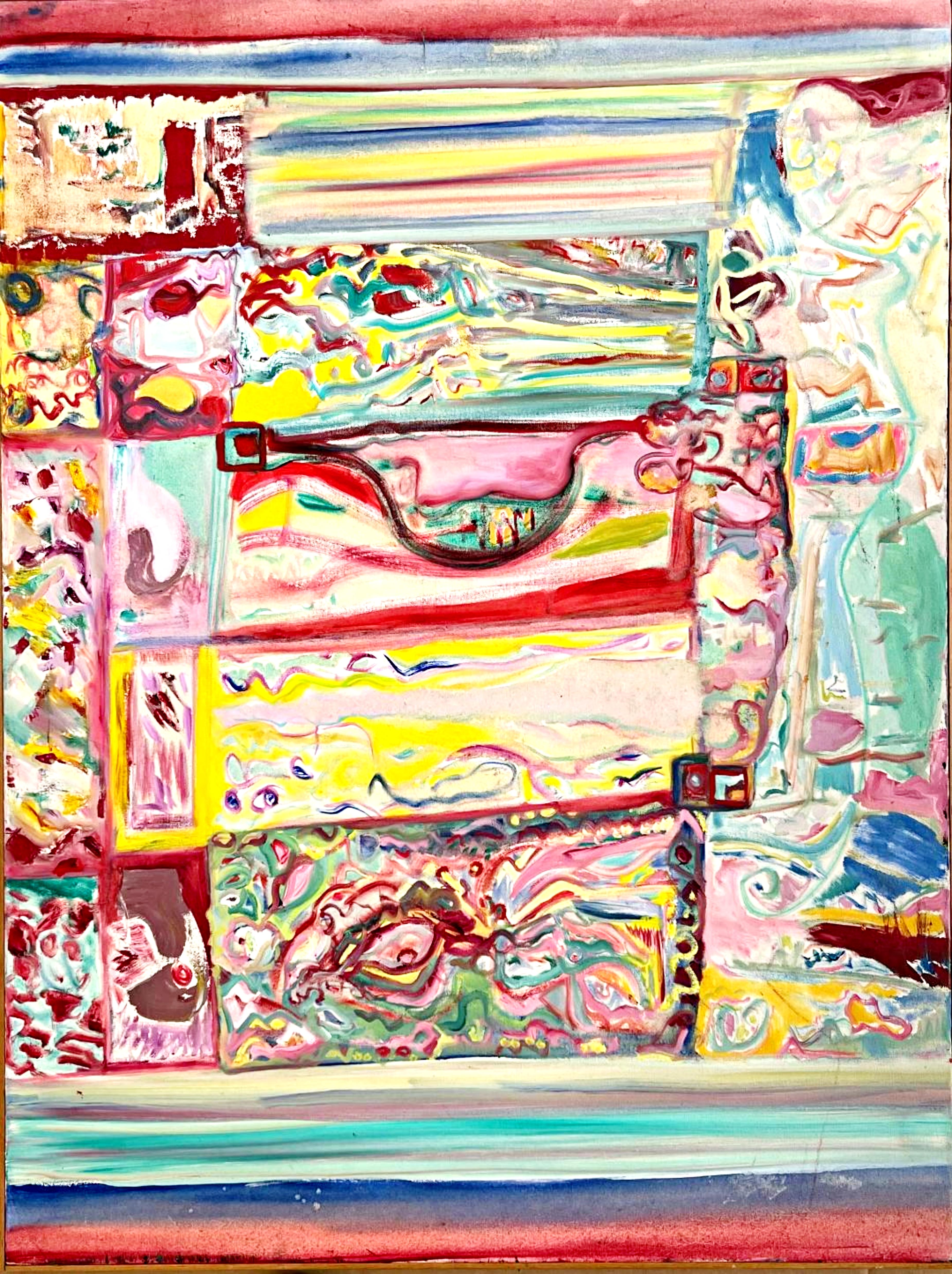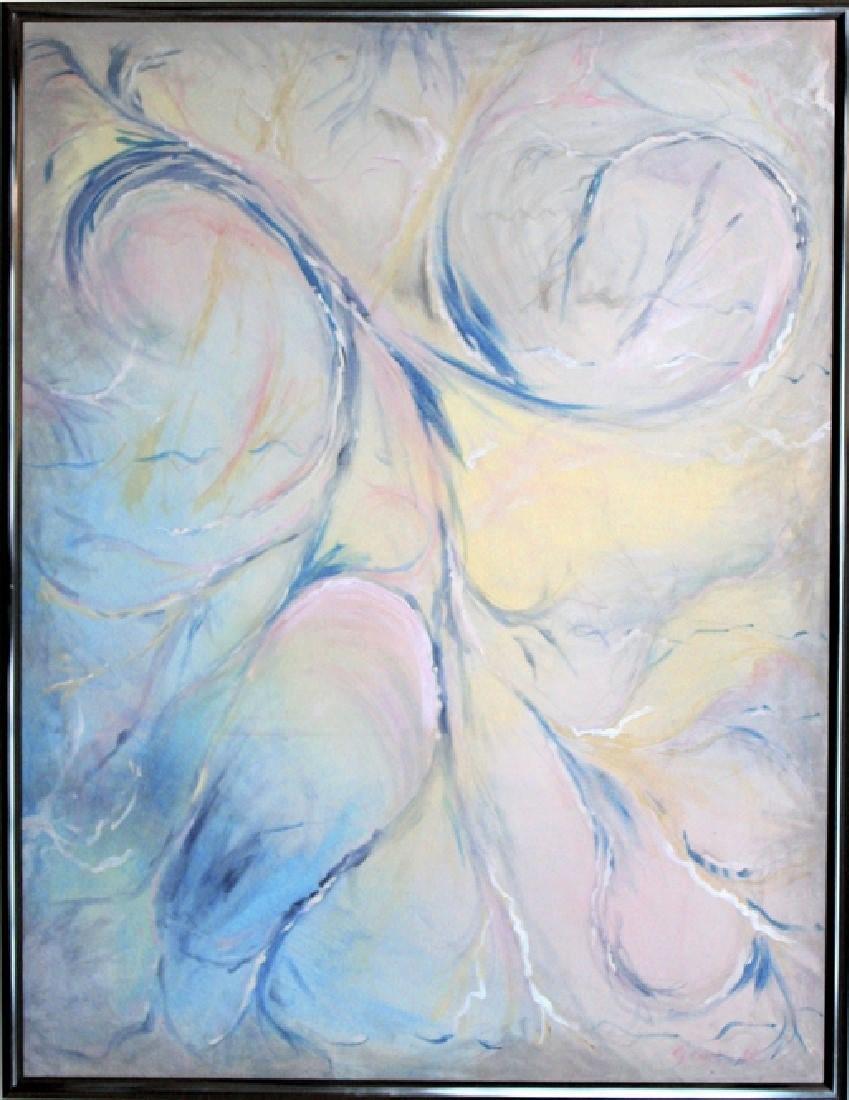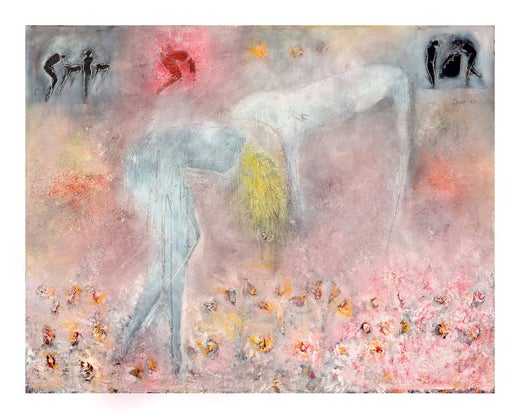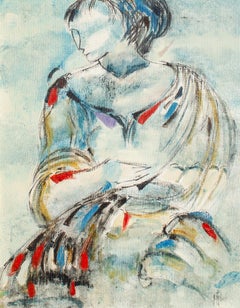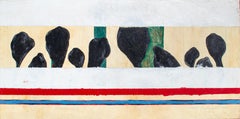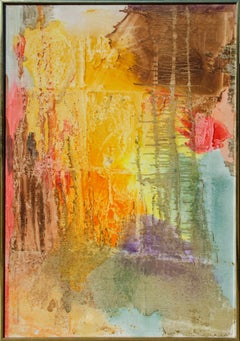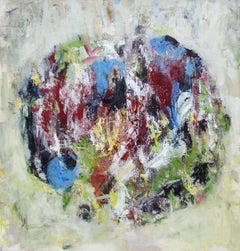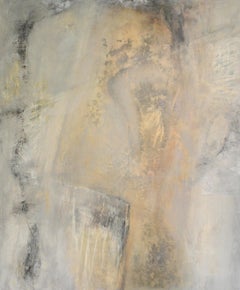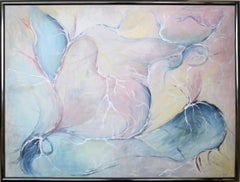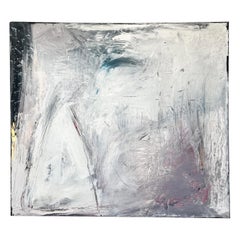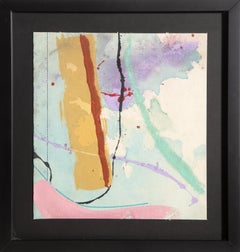Cindy KaneCindy Kane 1985 Original Painting on Plywood1985
1985
About the Item
- Creator:Cindy Kane (American)
- Creation Year:1985
- Dimensions:Height: 39.75 in (100.97 cm)Width: 36 in (91.44 cm)Depth: 2 in (5.08 cm)
- Medium:
- Movement & Style:
- Period:
- Condition:Good condition; not examined outside of the frame.
- Gallery Location:New York, NY
- Reference Number:Seller: RU21stDibs: LU2211213378162
Cindy Kane
Cindy Kane’s early works were influenced by her memories of these hieroglyphs and embellished with symbols from her dreams. “I hope [that viewers] get what I get from my work, which is enjoyment, visual satisfaction, and a story — whatever their own story is,” she said. “I can’t give them one, but I can tell my own, and the story they take with them is something personal.” Her early work was influenced by the experience of living and working at the bottom of the Grand Canyon National Park, where she had the opportunity to document Anasazi Indian pictographs in pen and ink drawings. These images would inform her work for years to come. While working in Grand Canyon National Park, she became familiar with the Anasazi Indian ruins and the pictographic narration of their lives on canyon walls. Her early works were influenced by her memories of these hieroglyphs, and embellished with symbols from her dreams. The primitive images found in her art depict essential and universal events in the human condition, procreation, survival, tribal communion, worship and ritual. Drawing from the tenets of Jungian psychology, she attempts to depict the universal archetypes which underlie all systems of art and narrative. Her paintings begin with a black background, into which she carves figures. Painting around them, she adds melted wax to enhance the impression of figures emerging from primordial forms. Hieroglyphs, characters and other shapes are scratched and chipped into the surface, contributing to the authentic, primeval feel her work exudes. She feels that chipping away at layers of wax, sand and paint is analogous to a peeling away of the many layers of the human psyche."
Cindy Kane has exhibited her work nationally in galleries and museums since 1986, and her paintings can be found in several private and public collections, including the United States Embassies in Tijuana, Mexico, and in Sarajevo, Bosnia and Herzegovina. She has lived in Martha's Vineyard, Massachusetts, with her husband and two daughters since 1996.
(Biography provided by Robert Azensky Fine Art)- ShippingRetrieving quote...Shipping from: West Babylon, NY
- Return Policy
More From This Seller
View AllMid-20th Century Modern Abstract Paintings
Oil, Board
1990s Contemporary Abstract Paintings
Canvas, Mixed Media
1970s Abstract Abstract Paintings
Canvas, Oil
20th Century Abstract Expressionist Abstract Paintings
Canvas, Oil
1960s Abstract Expressionist Abstract Paintings
Canvas, Oil
2010s Contemporary Abstract Paintings
Lacquer
You May Also Like
2010s Abstract Abstract Paintings
Oil
1980s Abstract Paintings
Oil
20th Century Unknown Post-Modern Contemporary Art
Acrylic
Early 2000s Abstract Expressionist Abstract Paintings
Acrylic
1990s Abstract Expressionist Abstract Paintings
Canvas, Oil
1980s Abstract Paintings
Oil
